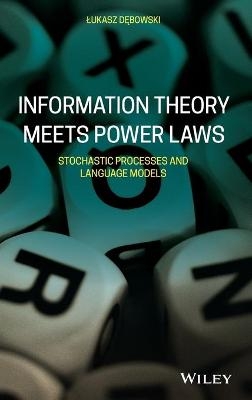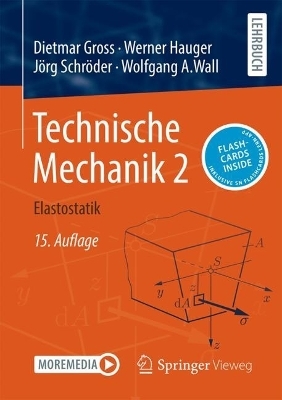
Information Theory Meets Power Laws
John Wiley & Sons Inc (Verlag)
978-1-119-62527-8 (ISBN)
Information Theory Meets Power Laws: Stochastic Processes and Language Models presents readers with a novel subtype of a probabilistic approach to language, which is based on statistical laws of texts and their analysis by means of information theory. The distinguished author insightfully and rigorously examines the linguistic and mathematical subject matter while eschewing needlessly abstract and superfluous constructions.
The book begins with a less formal treatment of its subjects in the first chapter, introducing its concepts to readers without mathematical training and allowing those unfamiliar with linguistics to learn the book’s motivations. Despite its inherent complexity, Information Theory Meets Power Laws: Stochastic Processes and Language Models is a surprisingly approachable treatment of idealized mathematical models of human language.
The author succeeds in developing some of the theory underlying fundamental stochastic and semantic phenomena, like strong nonergodicity, in a way that has not previously been seriously attempted. In doing so, he covers topics including:
Zipf’s and Herdan’s laws for natural language
Power laws for information, repetitions, and correlations
Markov, finite-state,and Santa Fe processes
Bayesian and frequentist interpretations of probability
Ergodic decomposition, Kolmogorov complexity, and universal coding
Theorems about facts and words
Information measures for fields
Rényi entropies, recurrence times, and subword complexity
Asymptotically mean stationary processes
Written primarily for mathematics graduate students and professionals interested in information theory or discrete stochastic processes, Information Theory Meets Power Laws: Stochastic Processes and Language Models also belongs on the bookshelves of doctoral students and researchers in artificial intelligence, computational and quantitative linguistics as well as physics of complex systems.
ŁUKASZ DĘBOWSKI, PHD, works at the Institute of Computer Science of the Polish Academy of Sciences in Poland. His doctorate is in mathematics and computer science and his primary research focus is in the areas of information theory and discrete stochastic processes. He is also interested in the theoretical properties of statistical and neural language models.
Preface ix
Acknowledgments xiii
Basic Notations xv
1 Guiding Ideas 1
1.1 The Motivating Question 1
1.2 Further Questions About Texts 5
1.3 Zipf’s and Herdan’s Laws 8
1.4 Markov and Finite-State Processes 14
1.5 More General Stochastic Processes 20
1.6 Two Interpretations of Probability 23
1.7 Insights from Information Theory 25
1.8 Estimation of Entropy Rate 28
1.9 Entropy of Natural Language 30
1.10 Algorithmic Information Theory 35
1.11 Descriptions of a Random World 37
1.12 Facts and Words Related 43
1.13 Repetitions and Entropies 47
1.14 Decay of Correlations 52
1.15 Recapitulation 54
2 Probabilistic Preliminaries 57
2.1 Probability Measures 59
2.2 Product Measurable Spaces 63
2.3 Discrete Random Variables 65
2.4 From IID to Finite-State Processes 68
Problems 73
3 Probabilistic Toolbox 77
3.1 Borel 𝜎-Fields and a Fair Coin 79
3.2 Integral and Expectation 83
3.3 Inequalities and Corollaries 87
3.4 Semidistributions 92
3.5 Conditional Probability 94
3.6 Modes of Convergence 101
3.7 Complete Spaces 103
Problems 106
4 Ergodic Properties 109
4.1 Plain Relative Frequency 111
4.2 Birkhoff Ergodic Theorem 116
4.3 Ergodic and Mixing Criteria 119
4.4 Ergodic Decomposition 125
Problems 128
5 Entropy and Information 131
5.1 Shannon Measures for Partitions 133
5.2 Block Entropy and Its Limits 139
5.3 Shannon Measures for Fields 145
5.4 Block Entropy Limits Revisited 155
5.5 Convergence of Entropy 159
5.6 Entropy as Self-Information 160
Problems 163
6 Equipartition and Universality 167
6.1 SMB Theorem 169
6.2 Universal Semidistributions 171
6.3 PPM Probability 172
6.4 SMB Theorem Revisited 178
6.5 PPM-based Statistics 180
Problems 186
7 Coding and Computation 189
7.1 Elements of Coding 191
7.2 Kolmogorov Complexity 197
7.3 Algorithmic Coding Theorems 207
7.4 Limits of Mathematics 215
7.5 Algorithmic Randomness 220
Problems 225
8 Power Laws for Information 229
8.1 Hilberg Exponents 231
8.2 Second Order SMB Theorem 238
8.3 Probabilistic and Algorithmic Facts 241
8.4 Theorems About Facts and Words 248
Problems 255
9 Power Laws for Repetitions 259
9.1 Rényi–Arimoto Entropies 261
9.2 Generalized Entropy Rates 266
9.3 Recurrence Times 268
9.4 Subword Complexity 272
9.5 Two Maximal Lengths 280
9.6 Logarithmic Power Laws 284
Problems 289
10 AMS Processes 291
10.1 AMS and Pseudo AMS Measures 293
10.2 Quasiperiodic Coding 295
10.3 Synchronizable Coding 298
10.4 Entropy Rate in the AMS Case 301
Problems 304
11 Toy Examples 307
11.1 Finite and Ultrafinite Energy 309
11.2 Santa Fe Processes and Alike 315
11.3 Encoding into a Finite Alphabet 323
11.4 Random Hierarchical Association 334
11.5 Toward Better Models 345
Problems 348
Future Research 349
Bibliography 351
Index 365
| Erscheinungsdatum | 03.02.2021 |
|---|---|
| Verlagsort | New York |
| Sprache | englisch |
| Maße | 158 x 234 mm |
| Gewicht | 703 g |
| Themenwelt | Mathematik / Informatik ► Mathematik ► Angewandte Mathematik |
| Technik ► Maschinenbau | |
| ISBN-10 | 1-119-62527-0 / 1119625270 |
| ISBN-13 | 978-1-119-62527-8 / 9781119625278 |
| Zustand | Neuware |
| Informationen gemäß Produktsicherheitsverordnung (GPSR) | |
| Haben Sie eine Frage zum Produkt? |
aus dem Bereich


